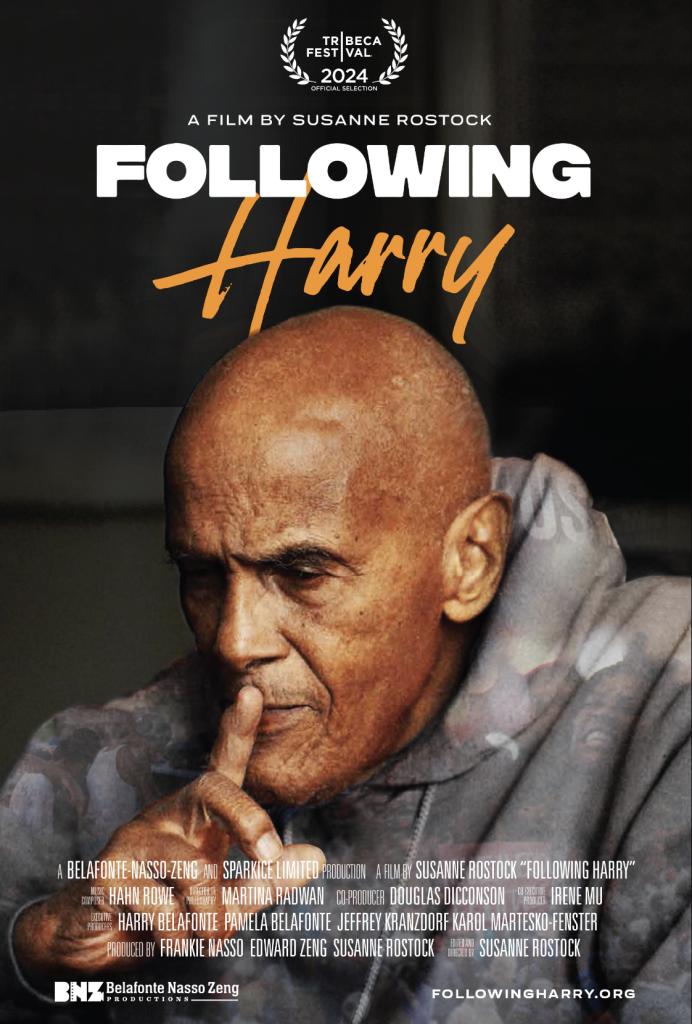By Montana Woods
Following Harry (dir. Susanne Rostock, 2024) opens with a scene of Harry Belafonte wearing a grey hoodie emblazoned with Trayvon’s name (a reference to Trayvon Martin) on it concludes with activist Philip Agnew wearing the same sweatshirt. The film illustrates the legacy of Belafonte who has touched many communities and been a model for activists in many spaces. Following Belafonte as he reflects on his life, identity, and the way he has created and shaped the civil rights movement, Following Harry looks at the important historical icons that Belfonte has worked with, the artists he has shaped who will continue his legacy of speaking out against what is wrong in the world, and the injustices that must be addressed.
The audience initially gets a glimpse into the life Belafonte has led and how he is adjusting to no longer working in the arts after having done so since the age of 19. We get a peek into the imprint he has created as an artist touring, singing, and producing records. This leads into conversations about the shootings of many black people at the hands of the police, a conversation that has unfortunately become more and more important considering our current political climate. The film also highlights the groups and protests that materialized surrounding not only these killings, but other issues such as the fight for reproductive rights and March for Our Lives. These references reveal the broad range of issues Belafonte was fighting for and against.
Belafonte is a powerful speaker, and this is evident in this film. His impact as a speaker is underscored by the journey he takes us on through the civil rights movement, where he traces black history and the ways he has used his influence in various spaces. We also see first hand the ways he has inspired other black artists to do the same, namely Jamie Foxx and Jessie Williams both of whom are featured and speak on not only the way that Belafonte had inspired them to speak out and use their platform, but also the work they have done as activists and how that has affected them professionally. Williams chronicles how his role as a spokesperson has at times led to being smacked down, and harsh backlash especially in regard to his career.
Following Harry serves as a concrete reminder of how long people have been fighting for their rights and freedom, and underscores the fact that this fight is not over. As importantly, it highlights the influence and impact that Belafonte has had on important movements and inspiring others to commit to continuing the work that he initiated, as well as perpetuating his legacy.

